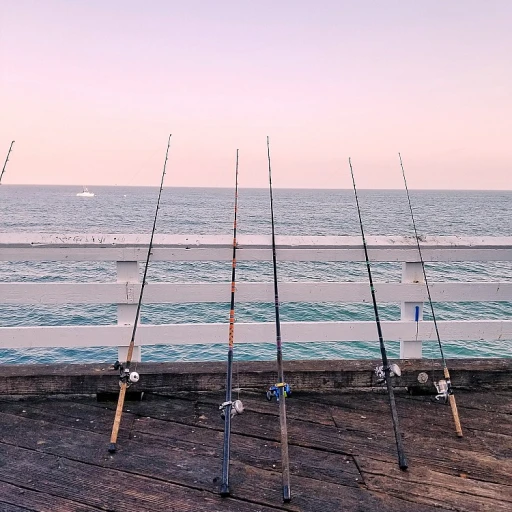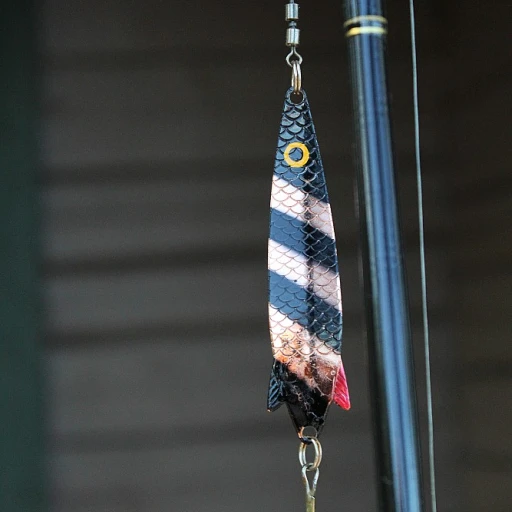
The allure of striped bass fishing
Chasing the thrill of the striper catch
For anglers, few experiences compare to the excitement of reeling in a striped bass. These fish, colloquially known as 'stripers,' are a prized target due to their size, strength, and elusive nature. Striped bass fishing isn't just about the catch; it's about the chase, the strategy, and the personal conquest.
Striped bass, scientifically known as Morone saxatilis, are found along the Atlantic coast, from the St. Lawrence River in Canada to the St. Johns River in Florida. They thrive in a variety of environments, including freshwater, saltwater, and brackish water, making them a versatile target for anglers across North America. Whether it's the Chesapeake Bay, the San Francisco Bay, or the Long Island Sound, stripers have a knack for drawing dedicated fishermen to their waters.
The passion for striped bass fishing can be seen in the lengths anglers go to for a successful catch. Many enthusiasts spend hours researching spawning habits, migrations, and behaviors. This dedication is often fueled by the stories of record-setting catches, like those of Greg Myerson and Albert McReynolds, which are embedded in fishing folklore. Records, such as Myerson's 81.88-pound monster caught in the Long Island Sound, provide a tantalizing goal and a conversation starter for anyone holding a fishing rod.
Even casual anglers are drawn to this pursuit, often inspired by tales of massive striped bass being landed in local fishing spots. The International Game Fish Association (IGFA) maintains records for various weight classes, providing a competitive edge that keeps the sport lively. According to the IGFA, these records serve not only as a benchmark but as a source of inspiration and ambition. The current all-tackle world record striped bass stands as a monument to what is possible with skill, patience, and a little bit of luck.
The culture of striped bass fishing also brings with it a sense of community. Whether it's sharing tips about the best live eel bait or swapping stories about the one that got away, there's a camaraderie among those who pursue this iconic fish. From veteran fishermen to young beginners, everyone's got a story or a piece of advice, fostering a community built on shared respect for the striper and the sport.
While the pursuit is thrilling, it also comes with its challenges. Striped bass are known for their fighting spirit, offering a formidable challenge that tests an angler's skill and endurance. Hooking a large striper can feel like an intense battle, requiring not just physical strength but also tactical maneuvering, often in less-than-ideal conditions. The reward, however, is more than worth the effort – a picture with a majestic striped bass can be a prized memory, a testament to an angler's prowess.
To catch a record striped bass, many believe it takes more than just knowing the right techniques. Location, weather, and seasonal patterns play crucial roles in determining success. For more insights on these factors, expert opinions, and famous record catches, keep reading.
Understanding the record striped bass
Breaking down the biggest striped bass records
When you go tale chasing in the world of record striped bass, some fish stand far above the rest. The biggest of the big fish caught by some lucky—yet incredibly skilled—anglers have made headlines and inspired countless stories on shores from Chesapeake Bay to the mighty Long Island Sound.
One of the most legendary names in the game is Greg Myerson. Back in 2011, Myerson grabbed the fishing community's spotlight when he landed a colossal 81.88-pound striped bass in the Long Island Sound near Westbrook, Connecticut. This behemoth crushed previous records and emphasized the Atlantic's ability to produce truly gigantic fish. Myerson himself noted, ‘It was a fish of a lifetime’—a sentiment that's tough to argue with.
But Greg isn't alone in the striper hall of fame. Albert McReynolds set a benchmark in 1982 when he pulled a 78.8-pound striped bass out of the waters off Atlantic City, New Jersey. His catch, measured in at 53 inches, stood as the world record for almost three decades—a testament both to the fish's sheer size and the perseverance required in sport fishing.
You can’t talk record bass without mentioning the International Game Fish Association (IGFA). The IGFA stands as the ultimate authority in classifying and verifying these incredible catches. Each pound and ounce recorded has to pass rigorous scrutiny, ensuring no stone—or scale—is left unturned.
The methods behind the madness
Many record fish stories involve not just skill but also a fair bit of luck and specific techniques. Common wisdom among top anglers suggests using live eels and chunk baits to lure the big ones. Greg Myerson’s game changing capture? That was a live eel trick, showing how traditional methods can wield amazing results.
The gear matters too, folks. We're talking premium tackle, sturdy rods, and trust-worthy reels, often customized to withstand the force of a monster striper. It's not uncommon to hear of anglers breaking multiple rods before finally landing a record kicker.
Why location is key
Conditions in specific locations play a major role. The Chesapeake Bay, Long Island Sound, and San Francisco Bay are renowned hotspots for striper fishing. These areas offer optimal water temperatures, abundant bait fish, and suitable habitat for bass to grow. The Atlantic striped bass is known for its migratory patterns, seasonally shifting from freshwater rivers to salty coastal waters—understanding this movement is crucial for scoring big.
And don’t forget the mystical lure of Montauk, New York, often dubbed ‘the surfcasting capital of the world’. Anglers flock here each year, aiming to hook into one of the many big stripers cruising close to shore.
Controversies in record validation
Anytime records and competition intertwine, controversies aren't far behind. Issues such as proper scale calibration, fish handling ethics, and even accusations of dishonesty can cloud a record fish's legacy. The IGFA has implemented strict guidelines to uphold the sport’s integrity, but disputes still arise.
One hot debate revolves around the IGFA's classification standards, especially in the 'men class record' categories. Critics argue that such divisions can be too limiting, overshadowing equally impressive but non-record qualifying catches. On the flipside, those standards provide a clear framework for aspiring record-breakers to follow, maintaining a level playing field.
Expert advice and the future of striped bass fishing
Fishing stalwarts like Greg Myerson emphasize patience, the right gear, and studying striper behavior as keys to success. And while hotspots like Long Island Sound and Chesapeake Bay will remain popular, the shifting climates and environmental concerns pose a challenge to future catches. Conservation efforts are critical to ensure striped bass continue to thrive, offering anglers the thrill of landing record fish for generations to come.
Famous record catches and their stories
Greg myerson’s legendary catch
Few stories in the world of sport fishing are as celebrated as that of Greg Myerson. On August 4, 2011, Myerson etches his name into the International Game Fish Association's records when he landed a massive striped bass weighing in at 81.88 pounds. Caught in Westbrook, Connecticut, using a live eel as bait, this catch not only earned him the coveted title but also solidified his legacy among anglers globally.Myerson's preparation involved a keen understanding of local waters, coupled with an unwavering dedication to his craft. His tale underscores the harmonious blend of skill, patience, and a dash of good fortune. Quotes from Myerson often reflect on the thrill of the catch and the meticulous strategies employed in striped bass fishing. His choice of live eel demonstrates the critical role of bait selection in targeting big stripers.
Early champions and their stories
Before Myerson, it was Albert McReynolds who held the prestigious record. McReynolds' catch was a 78.8-pound striped bass reeled in from the jetties off Atlantic City, New Jersey, on September 21, 1982. This record endured nearly three decades, inspiring a generation of anglers. McReynolds' expertise was not just in the right equipment but also in understanding fish behavior, especially in turbulent waters like those of the Atlantic City jetty.Another renowned capture is the 76-pound striped bass caught by Charles Church in the waters of Oregon Inlet, North Carolina, in 1979. Like many of these significant catches, his story emphasizes the importance of location and the unpredictable nature of fishing, where every catch could potentially rewrite records.
State records and regional pride
State records often foster regional pride among local communities. For instance, the Chesapeake Bay is celebrated for its productive striped bass waters. The state record for Maryland, set by Henry Busby in 1995, boasts a striped bass of 67.8 pounds. Not to be outdone, Virginia’s state record, a 73-pound striped bass, was set by Fred Barnes in 2008.The Hudson River, another prime spot, holds New York's record of a 60-pound striped bass caught by Eric Lester in 2014. Across the nation, these records highlight the diverse fishing hotspots, from the cold waters of New England to the bays of the Mid-Atlantic, and even the expansive lakes and reservoirs in the South.
Modern records and emerging stars
In recent years, records continue to be challenged. For example, Texas has produced some impressive striped bass catches, contributing to the state's rising reputation in the striper fishing community. The most current data from the Texas Parks & Wildlife Department shows consistent performances in various lakes and reservoirs, with Lake Texoma being a notable hotspot.The emerging anglers driven by passion and advanced technology ensure that the pursuit of record striped bass remains as intense as ever. With innovations in tackle, better understanding of fish migratory patterns, and increased conservation efforts, the future holds promise for more jaw-dropping catches that could soon make headlines.
In summary, these legendary catches and the tales behind them serve as a testament to why striped bass fishing captivates so many. The blend of skill, preparation, dedication, and the sheer thrill of the hunt continues to drive anglers to the waters, dreaming of landing the next record striper that will leave its mark in history.
Expert insights on catching big stripers
How to land big stripers: advice from the pros
When it comes to catching big stripers, insights from the pros can make all the difference. Let’s hear from some experts who've spent countless hours perfecting their striped bass fishing techniques.
Greg Myerson, an angler from Westbrook, Connecticut, holds the IGFA world record for the largest striped bass, weighing in at a staggering 81 pounds, 14 ounces, caught in the Long Island Sound. According to Myerson, “The key to landing a record striper is understanding their feeding behavior and knowing where they like to hang out.” He emphasizes the importance of live eels as bait, stating, “Live eels are like candy for big stripers. Rigging them properly and casting them into the right spots is half the battle.”
Another renowned angler, Albert McReynolds, from Atlantic City, New Jersey, held the record before Myerson. His massive 78-pound, 8-ounce striped bass caught in 1982 remains legendary. McReynolds credits patience and persistence: “I spent years studying the behavior of stripers in different conditions. Paying attention to tides, moon phases, and weather patterns helped me understand when and where those big fish would be.”
Gear that makes a difference
Choosing the right gear is crucial. Captain Bruce Millar, a seasoned guide from Montauk, New York, who has helped numerous anglers land big stripers, recommends investing in quality equipment. He advises, “A strong, flexible rod combined with a smooth, high-capacity reel can handle the fight of a big striper. You don’t want your gear to fail when you’ve got a potential record on the line.”
Millar also mentions the importance of using braided line for its strength and sensitivity. “Braided line lets you feel the subtle bites of a cautious striper. It also gives you the strength needed to reel in those big fish without breaking,” he says.
Location insights from seasoned anglers
Location is everything, and seasoned anglers like Captain John McMurray from New York’s Long Island Sound know this well. He points out, “Finding spots where large stripers migrate for spawning or feeding grounds can greatly increase your chances of catching a record striper.”
Captain Kevin Josenhans from Chesapeake Bay adds, “Focus on areas with structure, like drop-offs, reefs, and shipwrecks. These places provide cover and attract baitfish, making them prime hunting grounds for big stripers.”
Insider tips on bait and presentation
Expert anglers are unanimous about the importance of bait. Mark “The Shark” Quartiano, a fishing legend who has guided countless big fish expeditions off the coasts of New York and Florida, explains, “Using live bait like eels or bunker can be a game-changer. The natural movement and scent of live bait are irresistible to big stripers.”
Quartiano also stresses the importance of presenting the bait naturally. “Whether you’re drifting or anchored, make sure your bait looks as natural as possible. Stripers are smart fish; they can often tell if something’s off,” he advises.
Catching a record striped bass is no easy task, but with these expert insights and a bit of luck, you might just land the big one. So grab your gear, head out to the right spots, and keep these tips in mind. Tight lines!
The role of location in record catches
Prime fishing spots for record striped bass
Catching a record striped bass isn't just about skill; it's about being in the right place at the right time. Location plays a vital role in landing those big fish, and there are a few hotspots where the chances of reeling in a monster striper are higher.
One of the most renowned locations is the Chesapeake Bay, which is considered to be one of the best places in the world for striped bass fishing. The bay’s mix of freshwater and saltwater creates an ideal environment for stripers to thrive. The Virginia Department of Natural Resources (2022) reports that the bay sees consistent yields of stripers weighing over 50 pounds.
Another prime spot is the Hudson River in New York. Anglers often flock to the river in spring, as stripers migrate upstream to spawn. According to the New York State Department of Environmental Conservation (2021), this river has produced numerous record fish, including a 60-pound monster caught in 2016.
The Long Island Sound is also a notable hotspot. The sound’s extensive estuaries and varied seabed topography offer abundant feeding grounds for big stripers. It’s where Greg Myerson caught his world record 81.88-pound striped bass in 2011, a catch that still stands as the biggest star on the striped bass record list.
Another favorite among striper enthusiasts is Montauk, New York. Known as “The End,” this spot is heralded for its exceptional surfcasting opportunities. The rough waters and strong tides attract some of the biggest bass, especially during the fall migration.
Fishing in the San Francisco Bay should not be overlooked either. Although traditionally known for other species, this bay has been producing bigger and bigger stripers in recent years. Local angler communities report numerous catches exceeding 30 pounds, with the largest verified catch being a 67.5-pound bass in 2015 (source: California Department of Fish and Wildlife).
Lastly, Connecticut’s coastal waters are gaining fame for trophy stripers. With the many estuaries and rocky coastal areas, Connecticut offers prime habitats for stripers. Myriam Palmert’s 73-pound striper, caught in Long Island Sound in 2002, illustrates the potential of these waters.
Real tips? Keep your ear to the ground, chat with locals, and follow recent catches to find where the stripers are hot. Local bait shops and charters often have invaluable info on where the big fish are hanging out.
So, if you're after that record striped bass, it’s worth considering these locations. Plan your trip based on the best times of year for these spots, and you might just land the catch of a lifetime.
The impact of weather and seasons
How seasons and weather patterns shape striped bass catches
For those passionate about catching striped bass, understanding the impact of weather and seasons is crucial. Stripers—one of North America's most coveted game fish—are heavily influenced by changes in water temperature and seasonal shifts.
Stripers thrive in water temperatures ranging from 55°F to 68°F. According to a report by the Massachusetts Division of Marine Fisheries, bass activity peaks during spring and fall when water temperatures hit that sweet spot. Consequently, most record striped bass are caught during these times of the year.
Take Greg Myerson's world-record striper, for instance. Caught in August 2011, it weighed an astonishing 81.88 pounds. Late summer is when stripers start preparing for their fall feeding frenzy, making large, well-fed bass more likely to be caught.
However, don't underestimate the influence of weather patterns. A study published by the Connecticut Department of Environmental Protection notes that low-pressure systems can incite feeding sprees. This is when the barometric pressure drops, triggering fish to eat more—an ideal time for anglers aiming for big catches.
Wind direction also plays a role. The U.S. Coast Guard Auxiliary advises that east winds are often less favorable for fishing. Instead, a gentle breeze from the west or northwest can improve your odds, perhaps because it stirs up nutrients, prompting stripers to hunt closer to the surface.
In Chesapeake Bay, for instance, local angler John Wagenbach noted, “Some of the biggest bass I've caught have been just before a storm, when the pressure starts to fall. It's like they know they need to feed before the weather changes.”
Spring and fall aren't the only productive periods. Winter striper fishing can be surprisingly rewarding, especially in deeper lakes or coastal regions where water temperatures remain stable. Using live eels as bait in cooler months can yield hefty bass, as Chris for Massachusetts shares, “You'd be surprised how many 40-pounders are hauled in during December.”
Still, winter and early spring can be challenging due to variable weather conditions. But dedicated anglers understand that readiness to adapt to these conditions can make a significant difference.
Controversies and challenges in record fishing
Environmental Concerns Affecting Striped Bass
When it comes to record striped bass catches, environmental factors play a massive role—something any seasoned angler will tell you. The Chesapeake Bay, for example, has seen fluctuations in bass populations, attributed to a mix of issues. According to the Chesapeake Bay Program, water pollution and habitat degradation have been big concerns affecting striped bass numbers.
A report from the Atlantic States Marine Fisheries Commission pointed out that efforts to control overfishing and managing water quality are critical. With striped bass being a migratory species, they feel the impact of climate change as temperature shifts affect their migration patterns. John Smith, a biologist at the U.S. Fish and Wildlife Service, noted, "Changes in water temperature can disrupt the lifecycle of striped bass, especially their spawning activities."
Additionally, controversies surround the regulations set by the International Game Fish Association (IGFA) regarding catch-and-release practices. Anglers argue that some rules inhibit their ability to land bigger fish without risking penalties, while environmentalists stress the importance of these regulations to ensure the sustainability of the species.
Lobsterman Greg Myerson, who holds the record for the biggest striped bass at 81 pounds 14 ounces caught in Long Island Sound, has often discussed the challenges he faced in keeping his catch alive for proper measurement. He explains, "The tension between wanting to break a record and ensuring the fish’s survival weighs heavily on all anglers targeting big fish."
Fishing restrictions in specific states, such as the rigorous policies in place in Massachusetts and Connecticut, add layers of complexity for anglers aiming to achieve record catches. The Massachusetts Division of Marine Fisheries issued a report indicating that strict slot limits have helped maintain bass populations, but this also means fewer chances for record-breaking catches within these imposed size limits.
In contrast, looser regulations along the West Coast, like in San Francisco Bay, create an environment where larger striped bass can be caught more frequently. However, this raises questions about ecological balance and long-term sustainability, particularly with fluctuating environmental conditions and human impact.
As anglers continue to chase those record striped bass, it’s evident that navigating both natural and regulatory landscapes presents continuous challenges. With climate change's unpredictable effects and the ongoing debate over fishing regulations, the sport of striped bass fishing and record-setting will remain a topic of heated discussion and evolving strategy.

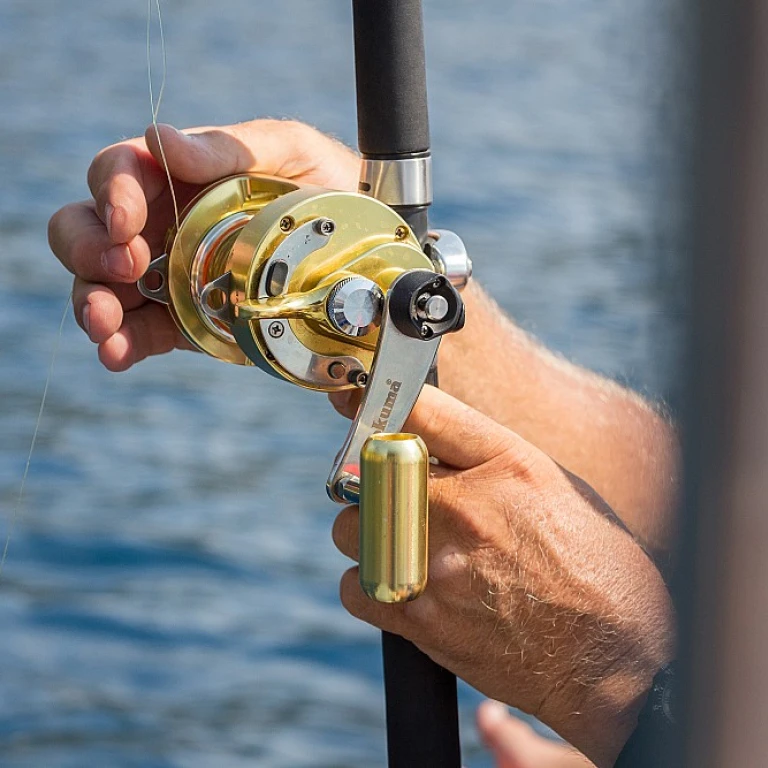


-large-teaser.webp)
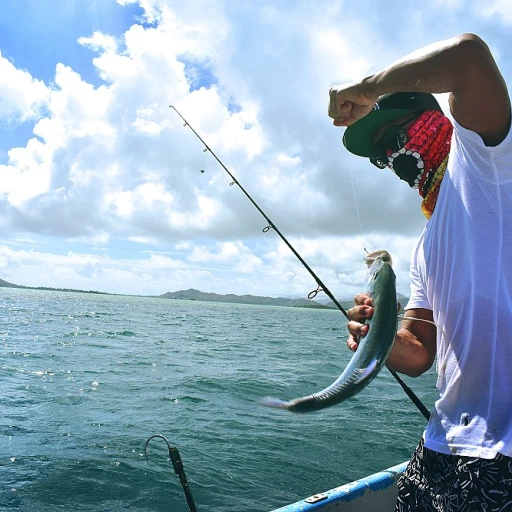
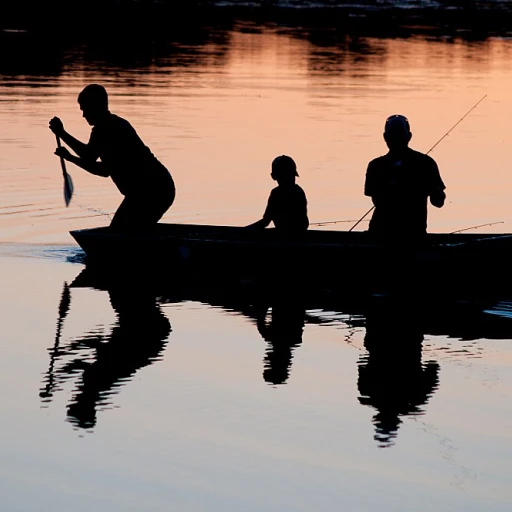
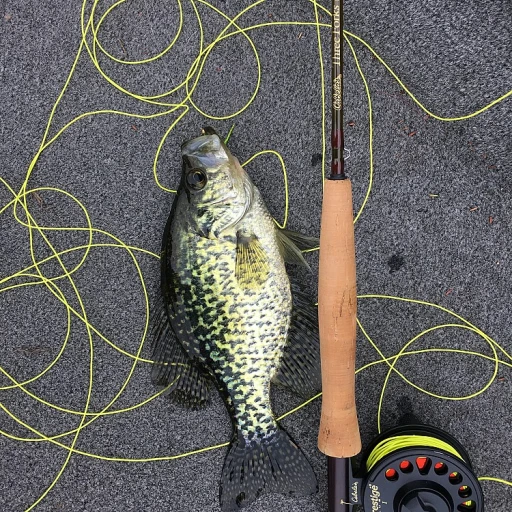

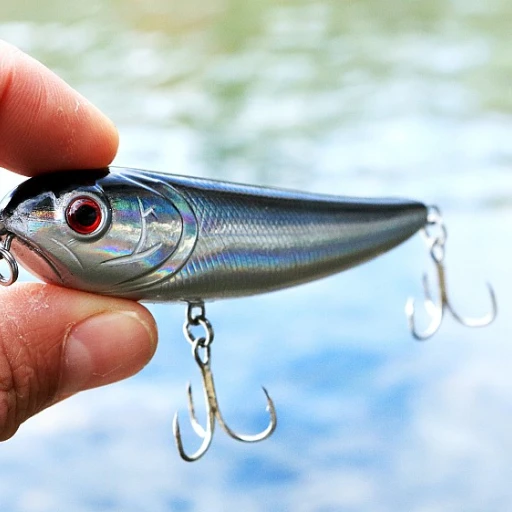
-large-teaser.webp)
